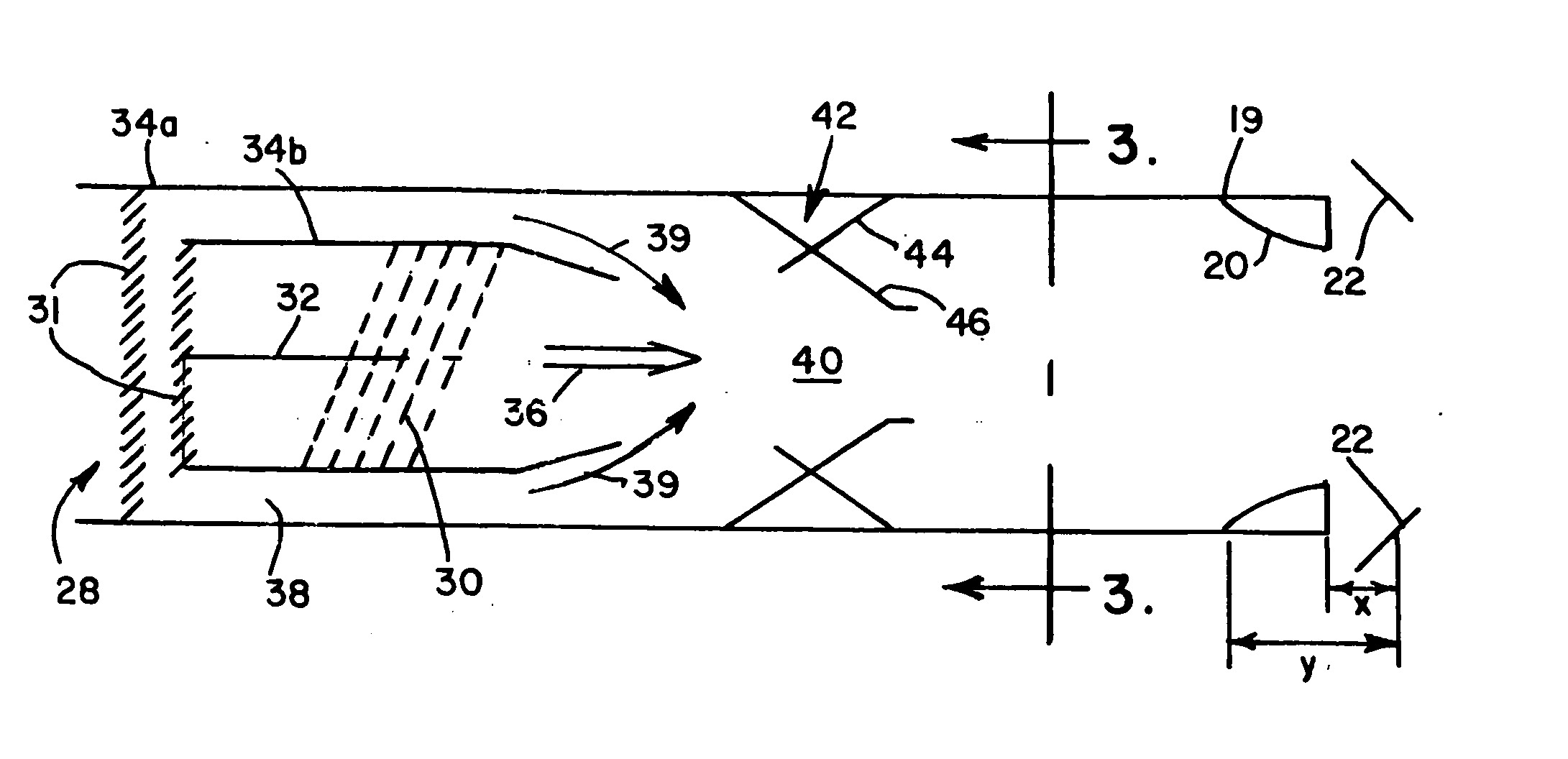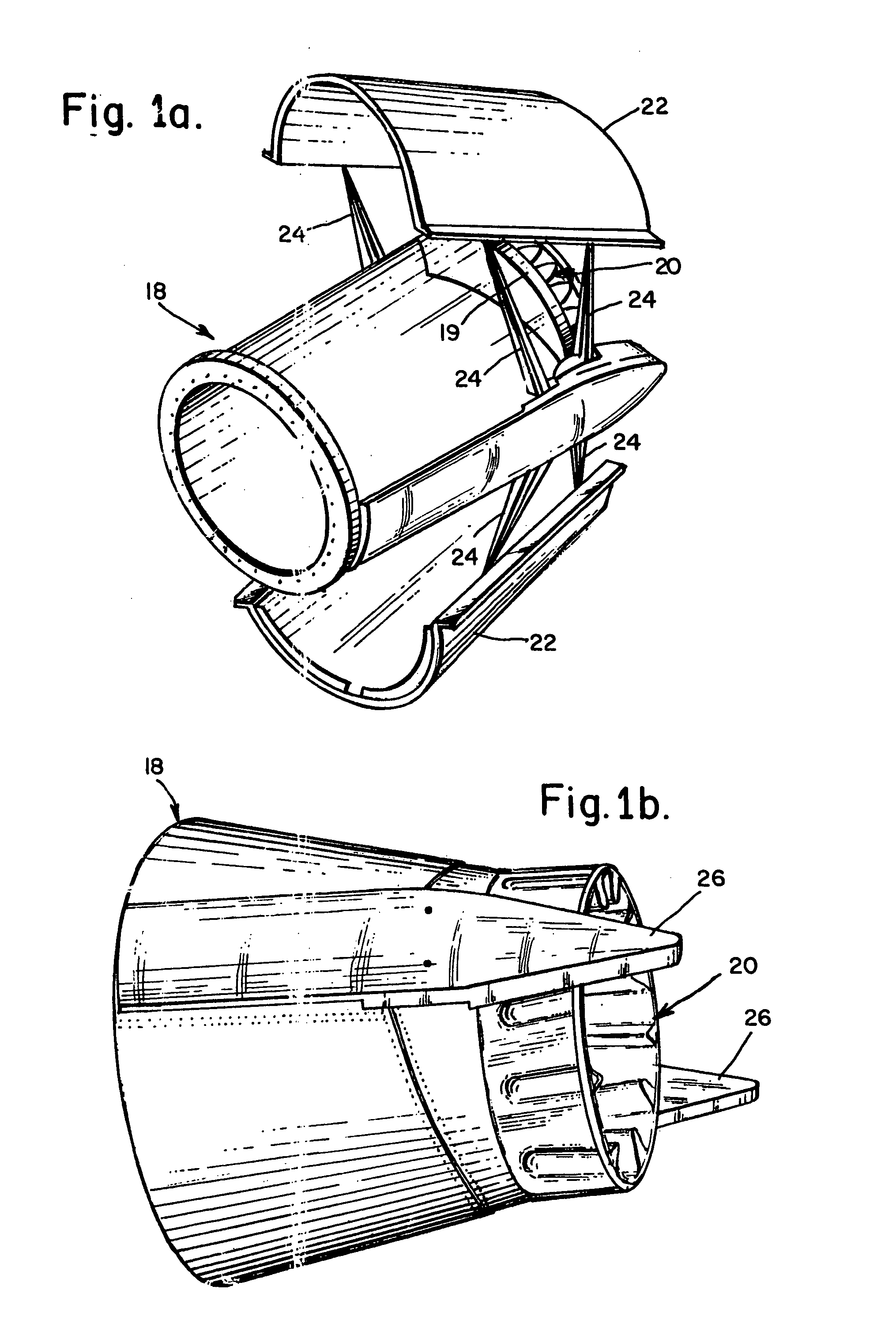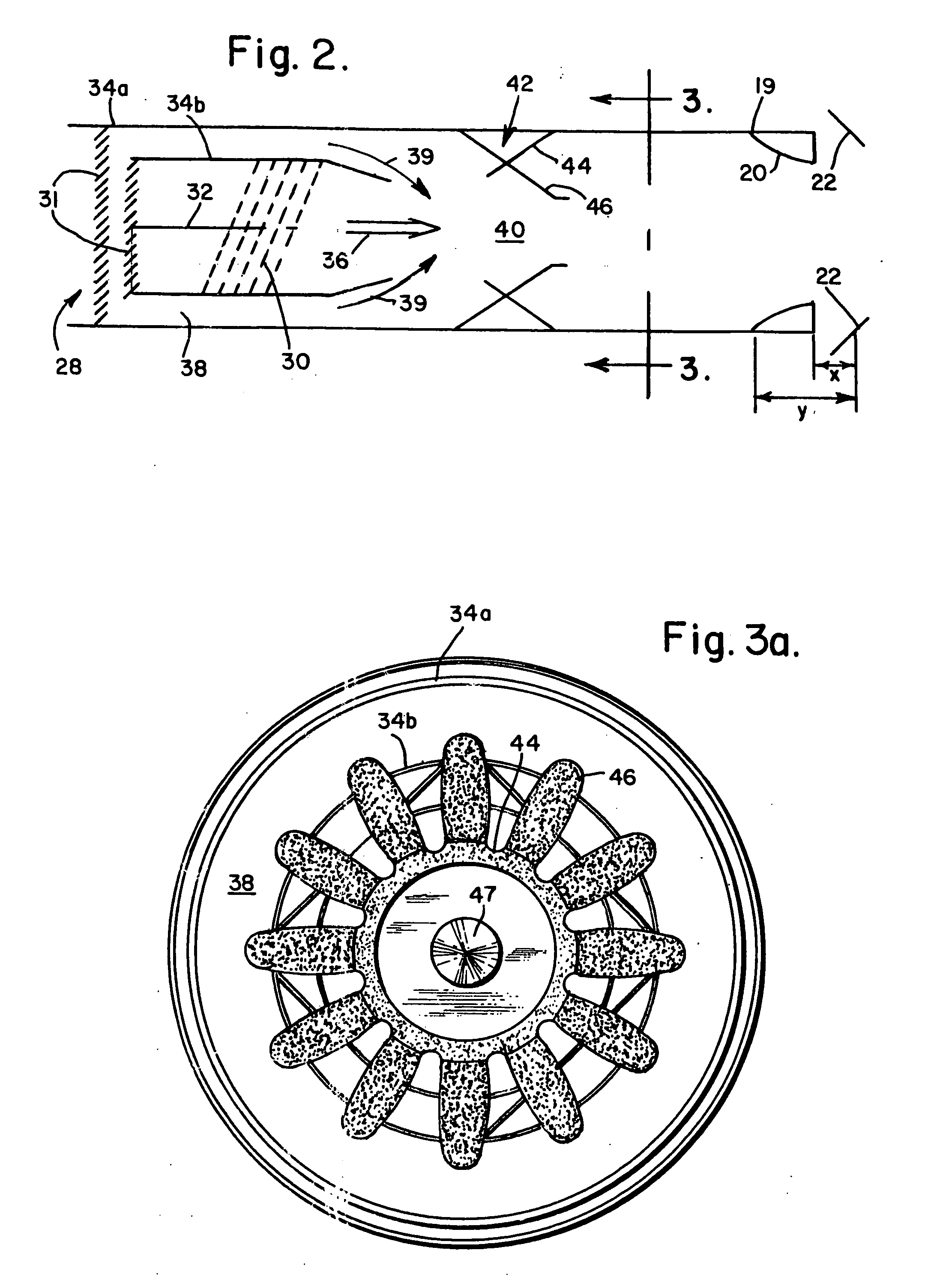[0005] These and other problems are avoided and the Stage 4 / Chapter 4 requirements are both met and surpassed by the present invention, not only for the above-mentioned Pratt & Whitney JT8D-217 / 219 Series engine but also for other engines. The second stage or external jet nozzle mixer of the present invention includes a number of lobes, which may be equal in number to those of the first stage or internal mixer, and all of the second stage mixer lobes may be identically formed. As the lobes axially extend outwardly from the mixer attachment to the engine nozzle, they axially inwardly expand from an essentially circular base to an undulating configuration whose apices increase in height. The lobes include complex curvatures whose interior and exterior surfaces greatly enhance mixing respectively of the previously mixed bypass cooling air-hot exhaust gases from the internal mixer and additional ambient cooling air, and thereby also reduce noise. At their terminus, the area encompassed by the lobes remains essentially the same (1,065 to 1,120 sq. inches) as for the jet engine for which it is designed which, for the Pratt & Whitney JT8D-217 / 219 Series engine, is 1,095 to 1,105 square inches (6,089 to 7,097 square centimeters). For other engines, the lobe terminus area is consistent with that of the engine in question.
[0007] The exit shape has elliptical shaped lobes and is proportional to a 10×2.5 ellipse (plus or minus 2 inch major axis, and +0.5 inch minor axis). These curve sides help resist distortion caused by the exhaust gas pressure.
[0009] Functionally, the interior surfaces of the lobes force the impinging hot gases, as previously mixed with the secondary bypass cooling air by the first set of lobes of the internal mixer, in all directions towards the interior of the mixer, essentially 45° to 60°, to effect a vigorous mixing of the gases. Simultaneously, additional ambient cooling air is forced from the exterior surfaces of the lobes to mix further with the internally mixed gases. These actions cause the smaller gas cores, which were formed by the first stage mixer, to break into innumerable forms which are both cooler and considerably noise attenuated. In part, the internal contours of the lobes act as flutes to produce a lifting effect which causes the primary hot and cold flows to mix before entering the nozzle. The external contours of the lobes act as chutes which produce a venturi effect and accelerate the cooler secondary flow of ambient air. The lobes thereby act collectively as an injector to force the cooler ambient secondary flow into the previously mixed primary flow as it exits the nozzle. These actions further reduce the noise level. Further, the curve sides of the lobes help resist distortion caused by the exhaust gas pressure. An ameliorative further result is that the accelerated gas / air flow helps to faster move large, previously slowed mixtures to increase the efficiency of the jet engine, by increasing its thrust, that is, an increased thrust specific fuel consumption (TSFC) is estimated to be about a 3% improvement. Such increased TSFC occurs through better dynamic mixing of the bypass or fan duct and turbine exhaust gases. It addresses the problem of the transfer from a hot, high velocity volume to a cooler, slower velocity volume. This mixing levels the disparate flow velocities attendant with the jet engine exhaust, reduces the peak velocities from the jet engine core and increases the lower bypass velocities of the jet engine internal bypass flow. Because noise is a function of jet exhaust velocity to the 7th power, and because peak velocities from the core flow are reduced, the jet noise is thereby reduced.
[0010] As stated above, the axial length of the mixer of the present invention is 12 inches±3 inches, which means that there is a lesser distance between the nozzle exit and the buckets of the thrust reverser. The effect of such decreased distance is that more of the thrust from the engine is captured by the buckets and thus utilized to brake the aircraft when needed.
[0011] Several advantages are derived from this arrangement. The jet nozzle mixer of the present invention fits within and is attachable to the existing engine exit whose area which, as stated above, is 1,095-1,105 square inches (6,261-7,129 square centimeters) exit area for the Pratt & Whitney JT8D-217 / 219 Series engine. The lobes of the present invention can be made uniform and easily tailored to provide an efficient mixing of the exhaust gases with the ambient air and the attendant reduction in noise. Its uniform dimensions enables its manufacturing costs to be reduced. The need to modify the existing thrust reverser per se is avoided because the mixer is fittable and attachable to the existing engine exit; only minor dimensional changes in the existing STANG fairing, and tailpipe and outer barrel are required without otherwise needing any change in other components such as the thrust reverser, the thrust reverser doors, and their linkages. Efficiency in jet engine operation is increased, with concomitant saving of fuel and costs thereof. Thrust reverser braking of the aircraft is improved.
 Login to View More
Login to View More 


